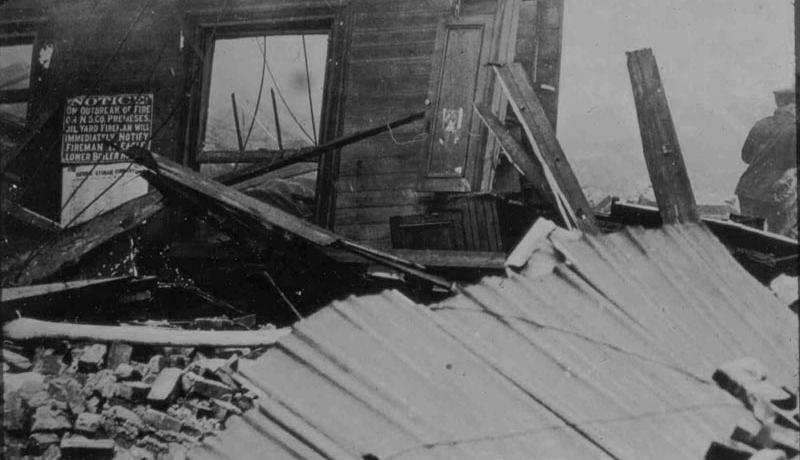Sound and Fury

In 2017, tensions are high and the United States has several international rivalries. Imagine, if you will, that a saboteur from Iran, China, or Mexico successfully detonated a weapons storage facility in New Jersey, killing at least three people, possibly as many as seven, and causing more than $400 million of property damage. Imagine as well that some of that damage was on the backside of the Statue of Liberty, her majestic robes shockingly pockmarked.
It’s safe to assume that the national outcry would be deafening. First, we would call it a terrorist act. We would likely obsess over the details and launch investigations to find the perpetrators. America would be rattled once again by an attack on its own soil.
Well, believe it or not, America did suffer precisely this type of attack on July 30, 1916.
It became known as the Black Tom explosion, because the facility attacked was on Black Tom Island, a swatch of landfill protruding into the harbor in present-day Liberty State. At least three people died. The property damage added up to $20 million—roughly $440 million in 2017 dollars. The explosion shattered windows as far away as Times Square, a wall at Jersey City’s City Hall cracked, and a 10-week-old infant was knocked from his crib in a residence nearby.
According to a recent study cited by the State of New Jersey’s Division of Parks and Forestry, this blast was the equivalent of a 5.0 or even 5.5 earthquake on the Richter scale, and we know it occurred just after 2:00 a.m., because a piece of debris struck the clock atop the Jersey Journal building in Journal Square, stopping its hands cold at 2:12. Despite all of this, the event does not register in our national consciousness in nearly the same way as watershed moments such as Pearl Harbor or 9/11.
The context of 1916 helps to explain why the incident did not become a national sensation, and why it doesn’t get too much ink in history books. First and foremost, it was a more violent time. War raged in Europe. The nearby Atlantic was absolutely fraught with scuttled ocean liners, torpedoes, mines, and other dangers in the turbulent 1910s. Though the iceberg that sank the Titanic in 1912 was certainly not piloted by German saboteurs, the fact that over 1,500 died in that tragedy makes it more clear why the three fatalities of Black Tom do not stand out.
Before Black Tom, in January 1915, there had already been an act of sabotage at the Roebling Steel foundry in Trenton, NJ, which was thought to be perpetrated by either German spies or labor radicals. Even more notable was the infamous scuttling of the Lusitania in May of 1915. In this horrific torpedo attack on a passenger steamship with weapons in its hold, more than 1,100 civilians perished, including 120 Americans. When mixed in with a mysterious foundry fire in January 1917 near Calgary, in nearby Canada, Black Tom stands in relief as just one of many incidents in the heated years leading up to the U.S. entry into World War I. In addition, the authors of 350 Years of New Jersey History note that the years leading up to WWI were a time of major expansion in the production of ammunition and chemicals in the U.S., especially in industrialized New Jersey, and this also meant an uptick in accidental explosions in the state. Even after the war, there was a 1920 Wall Street bombing — attributed to a radical Italian anarchist — that killed 30.
Viewed in this light, it is less surprising, then, that the 1916 detonation of roughly two million tons of dynamite, TNT, black powder, and shrapnel, in a fireworks-like series of ongoing explosions, did not actually leave a strong imprint on the narrative of American history.
It took a while for the U.S. to declare war (April of 1917), and it took even longer (1939) for a commission to conclude that a German saboteur was indeed responsible to the Black Tom explosion. In 1979, after many, many years of deliberations, the German government did finally pay some reparations for this act of sabotage.
Visually, viscerally, and in auditory terms, the Black Tom explosion put on quite a show. Yet, with so few casualties and without causing a rapid declaration of war, it was the kind of sound and fury that signified — if not nothing — then not nearly as much as one might expect.